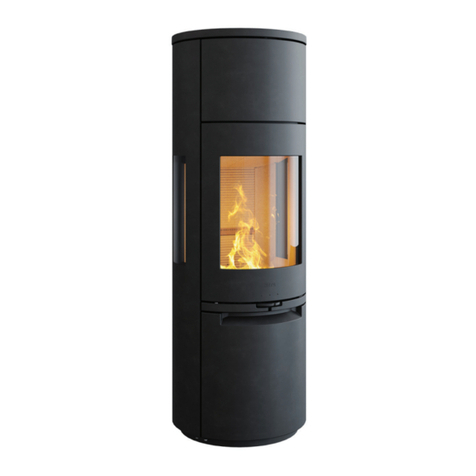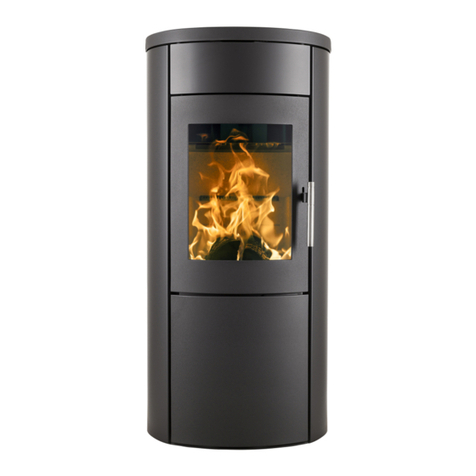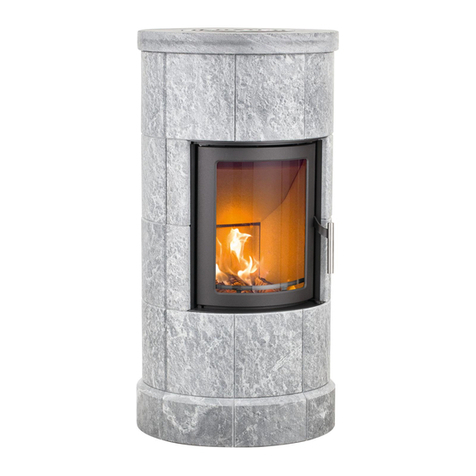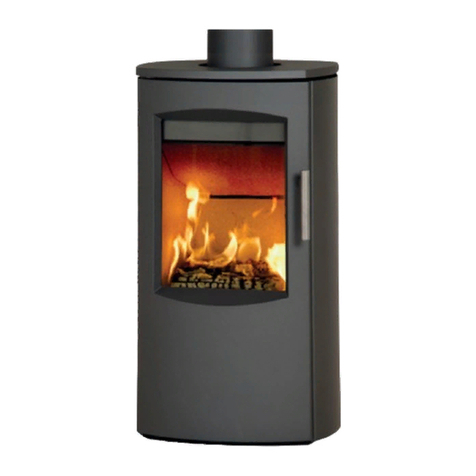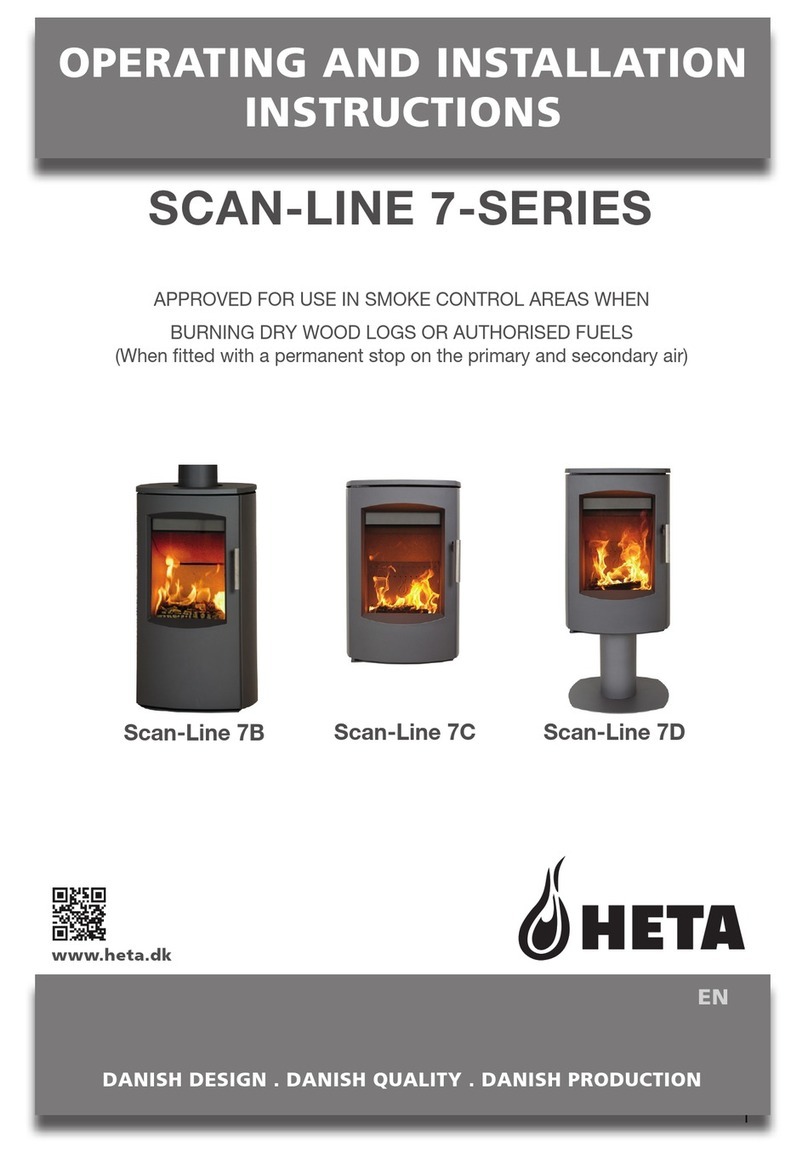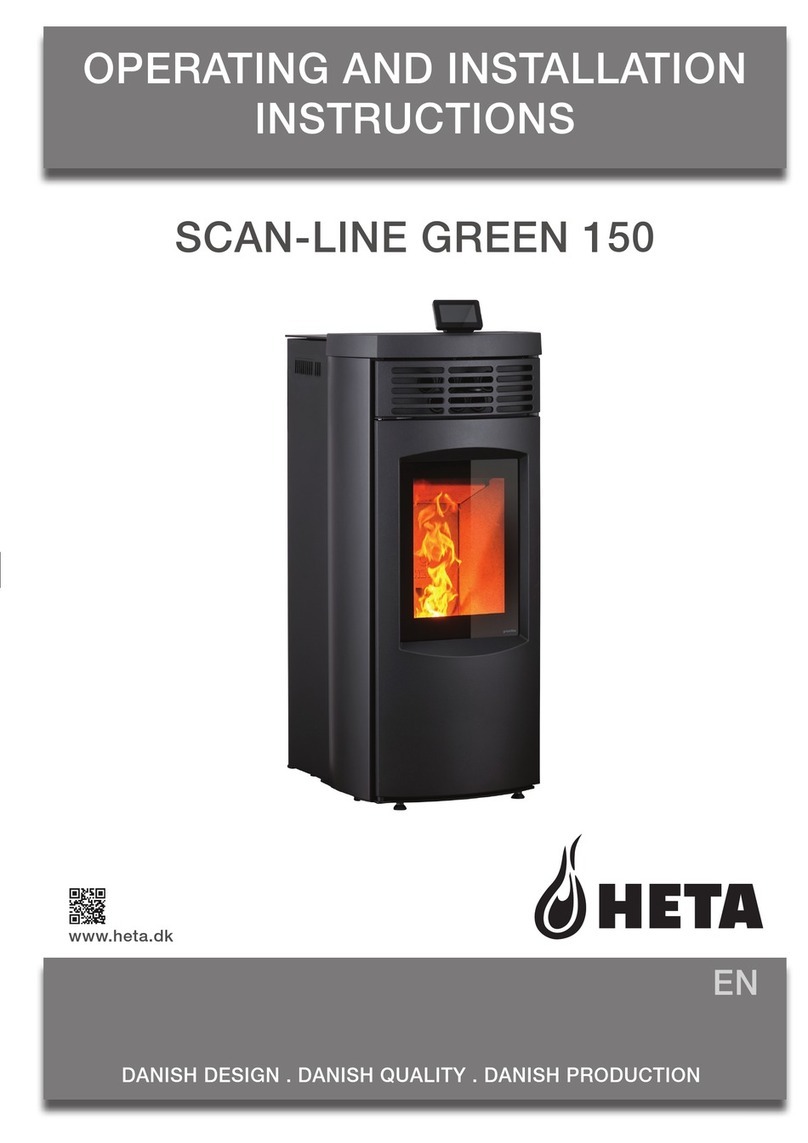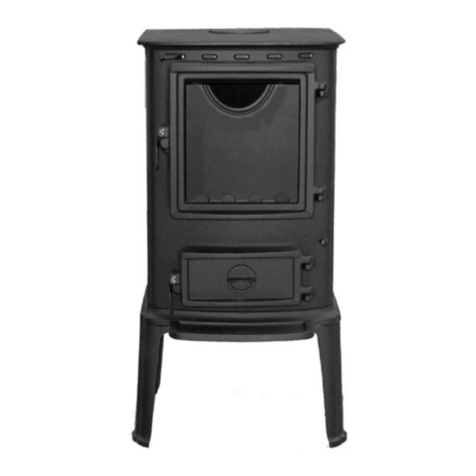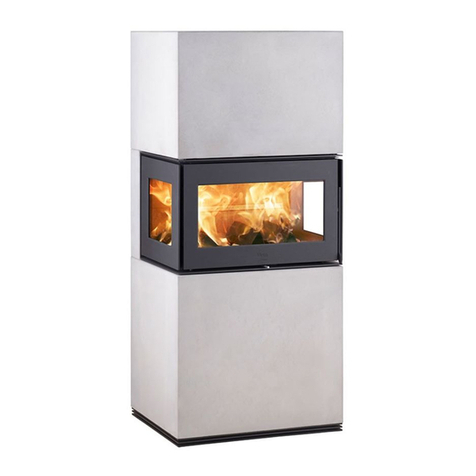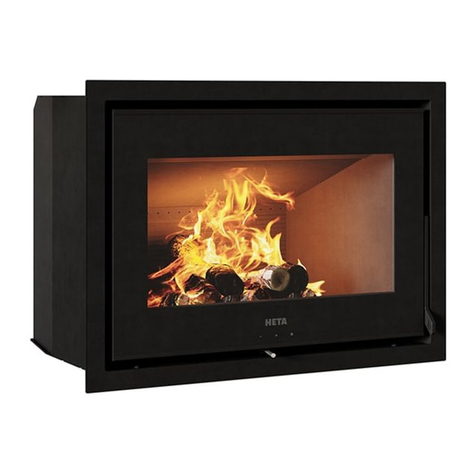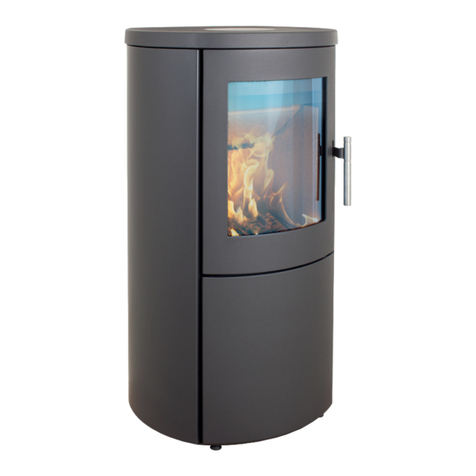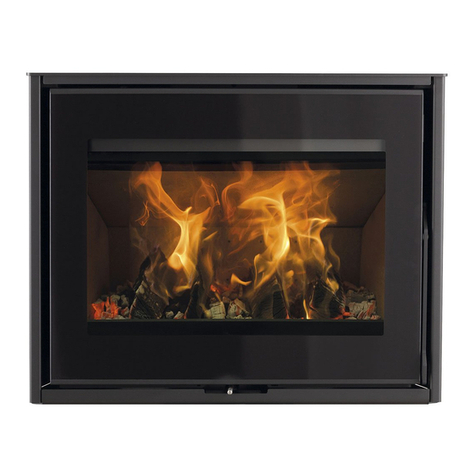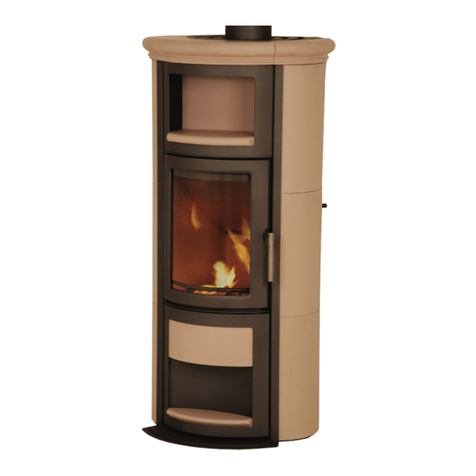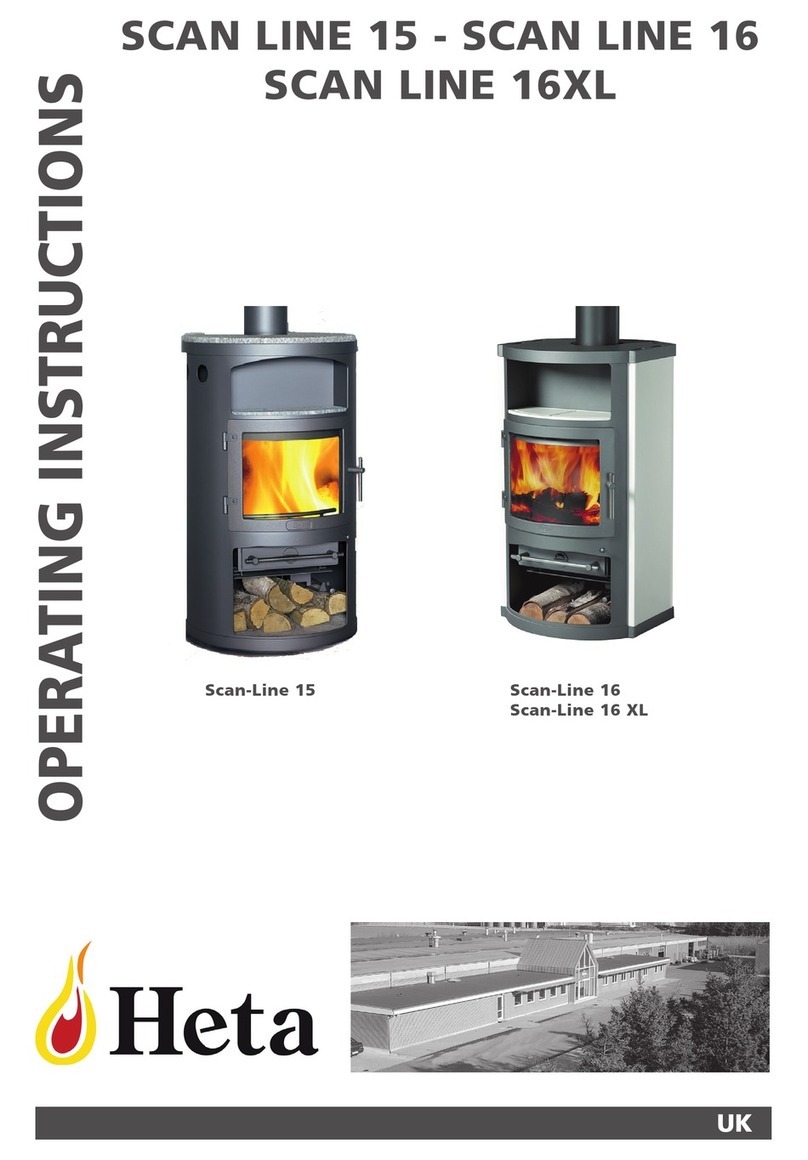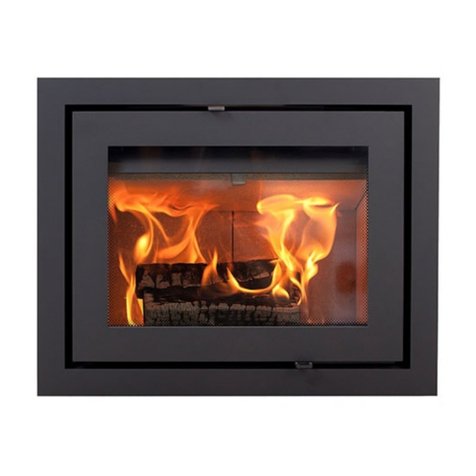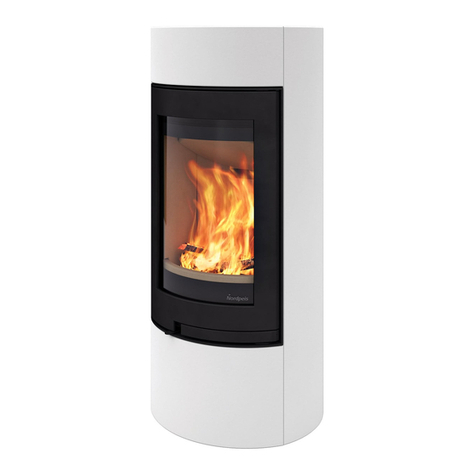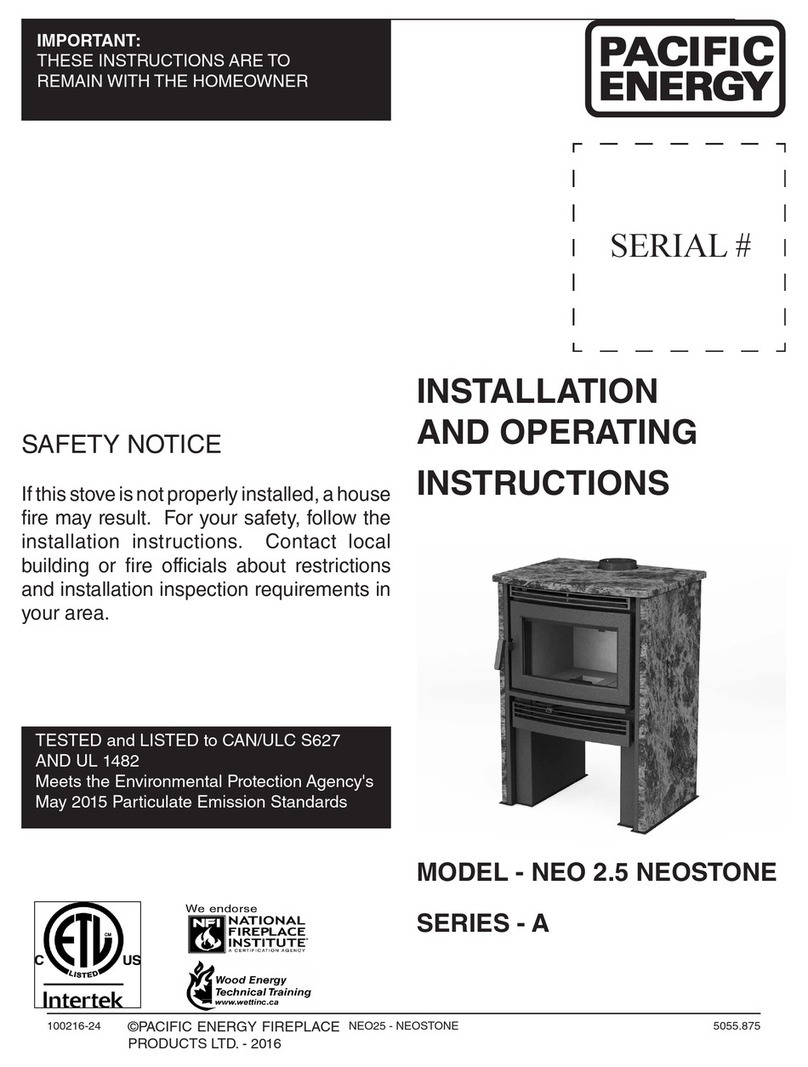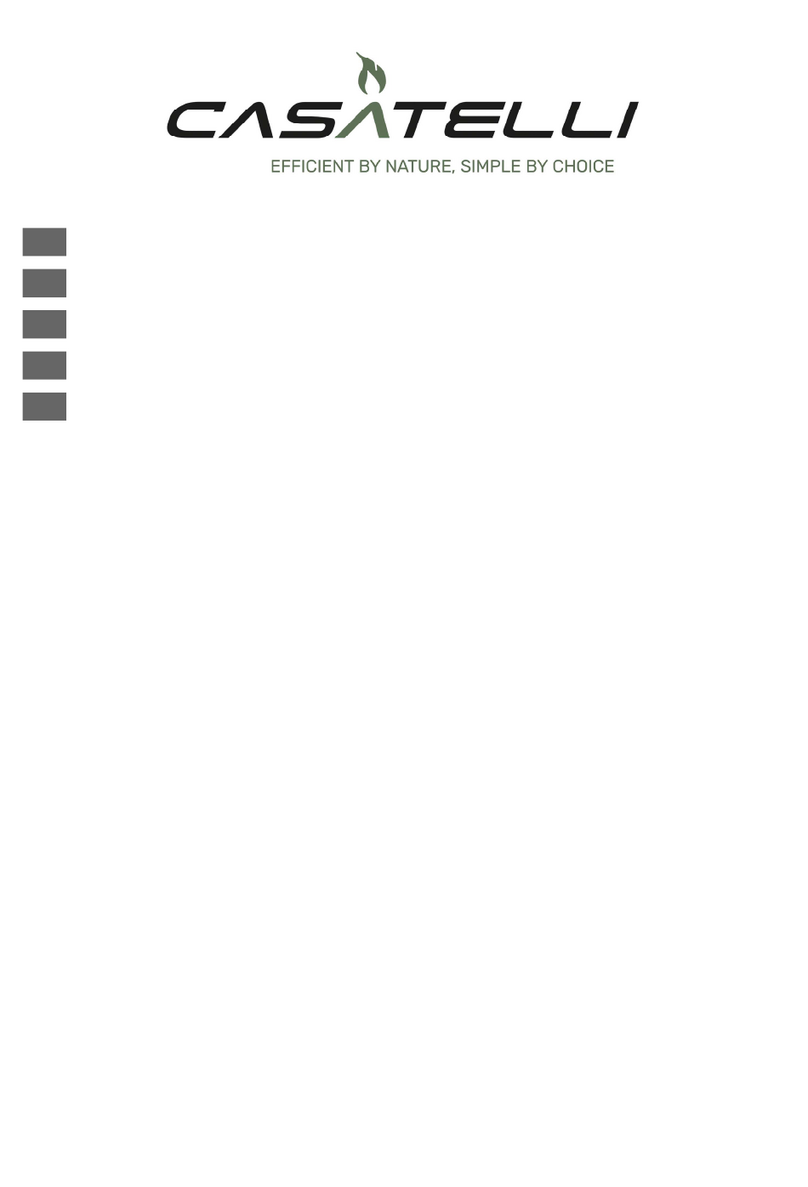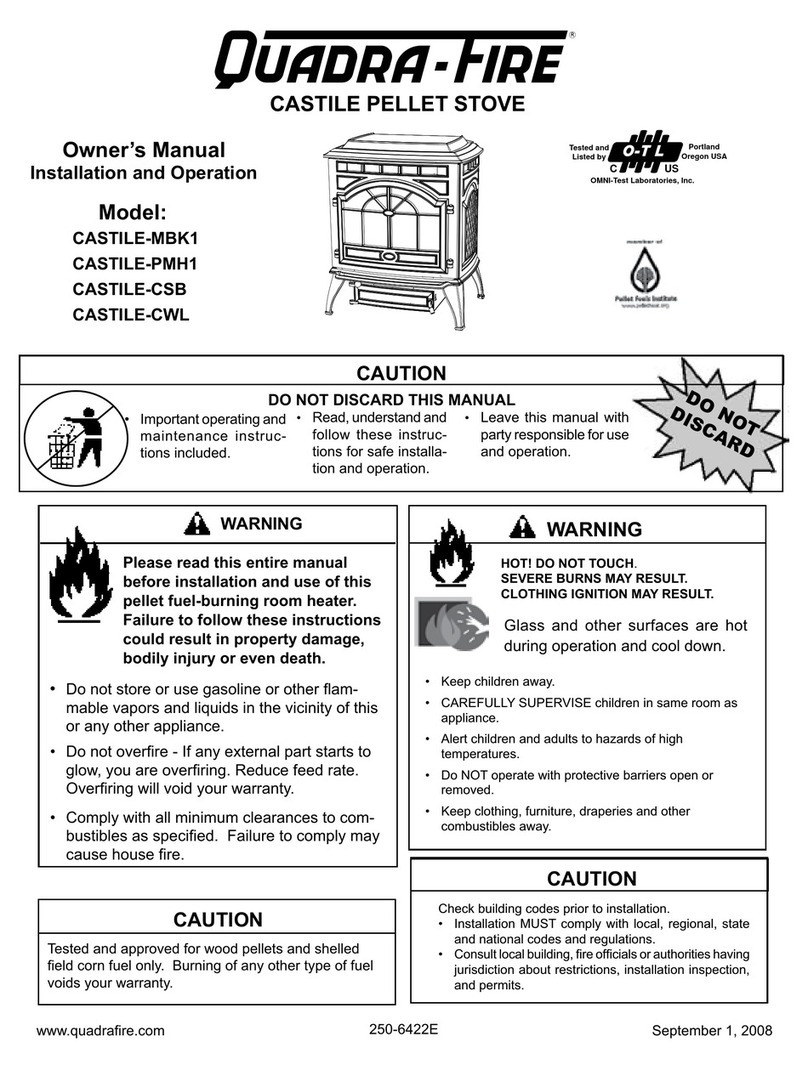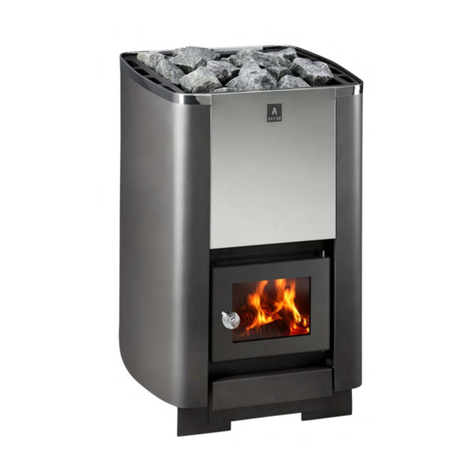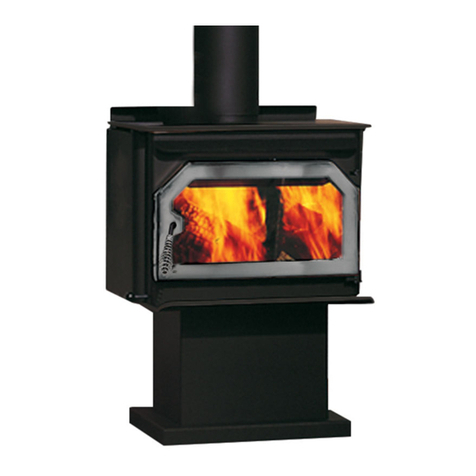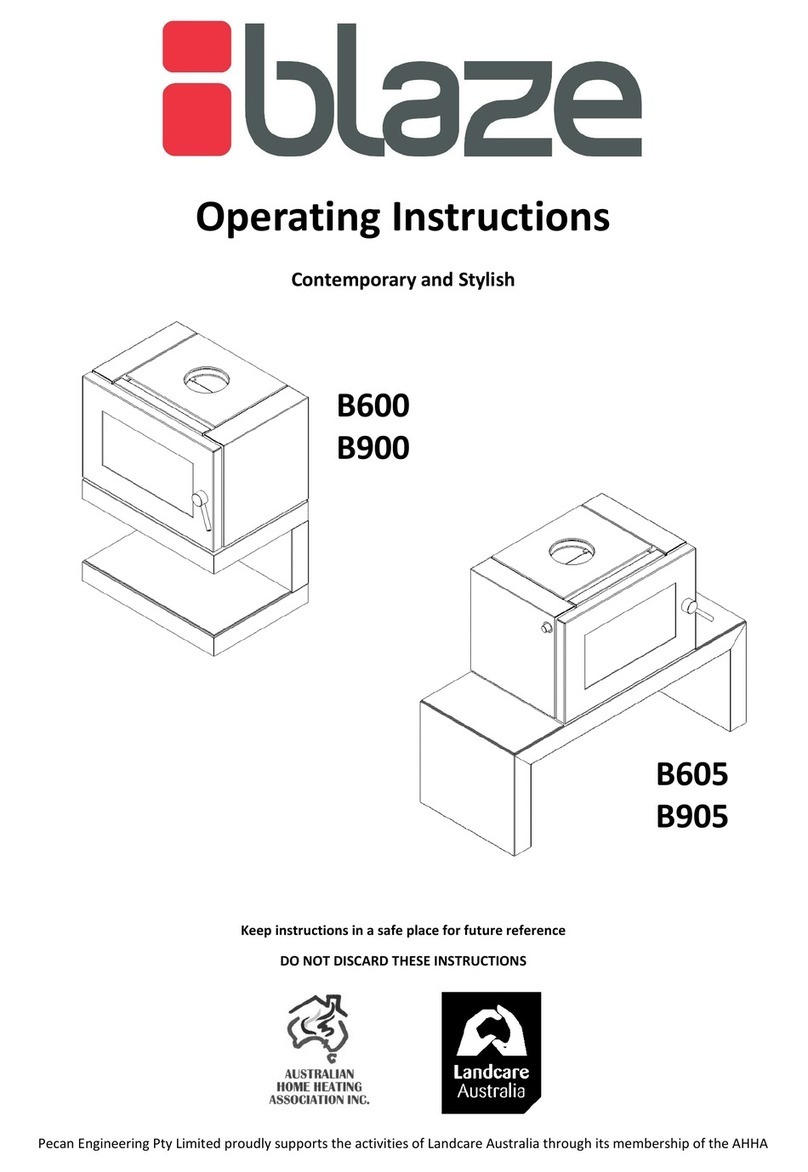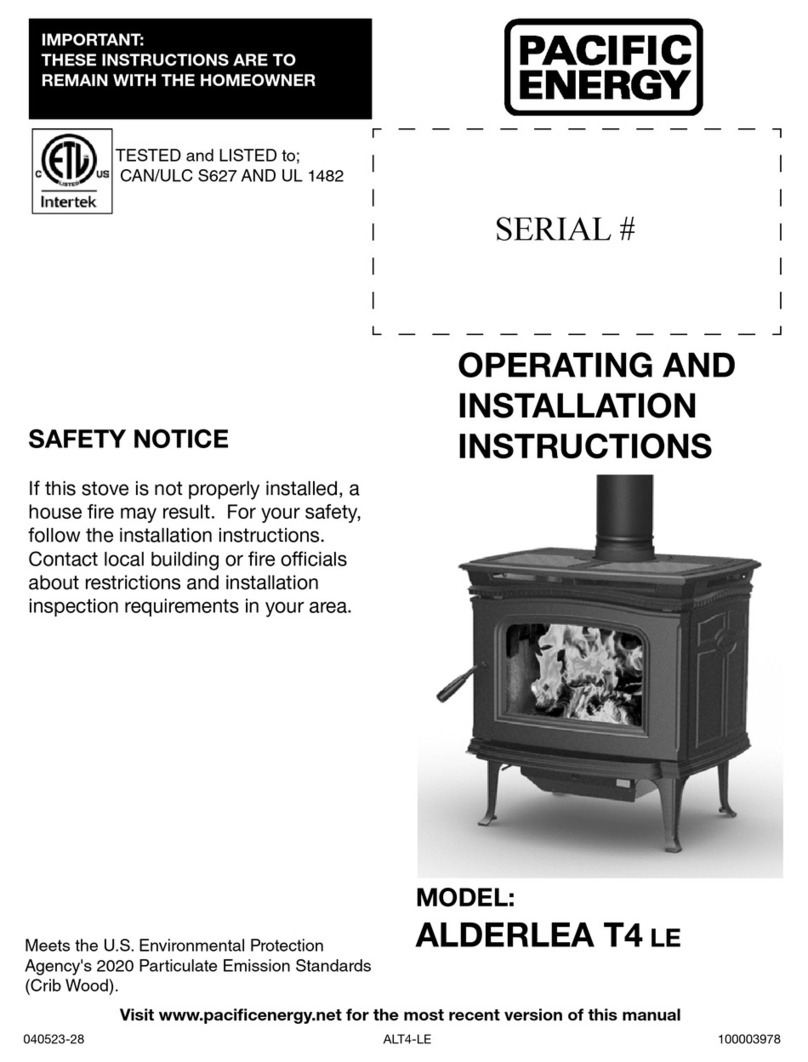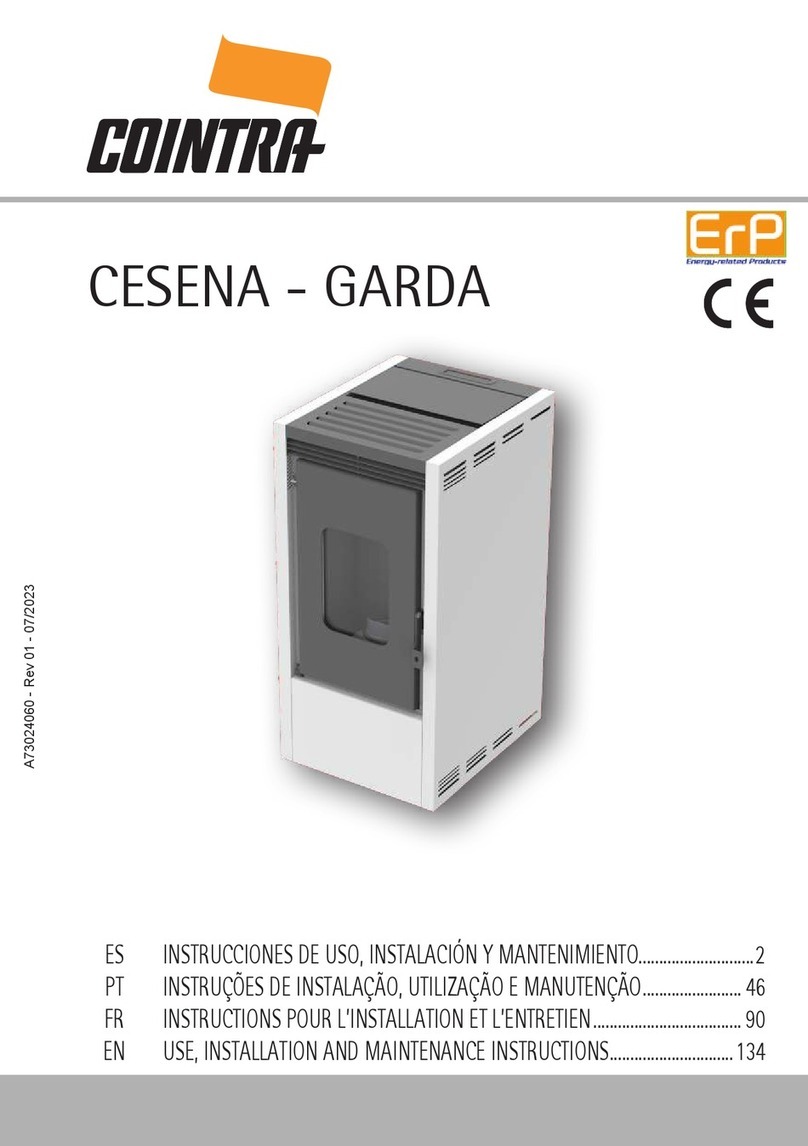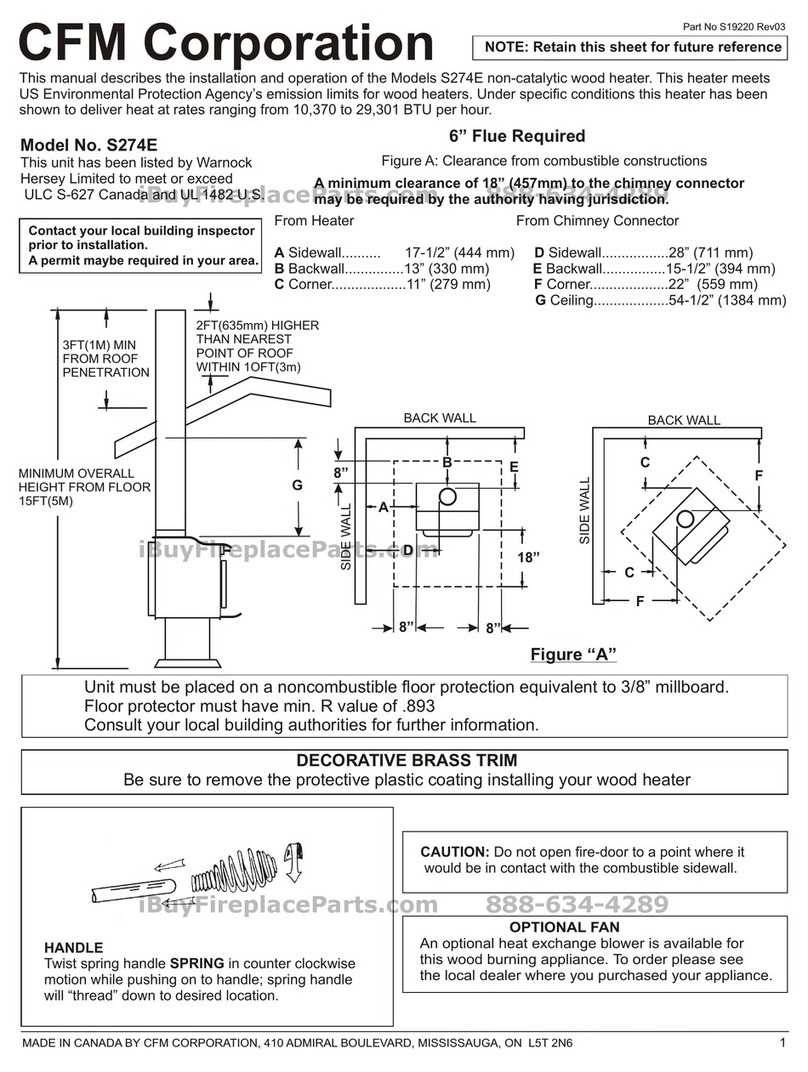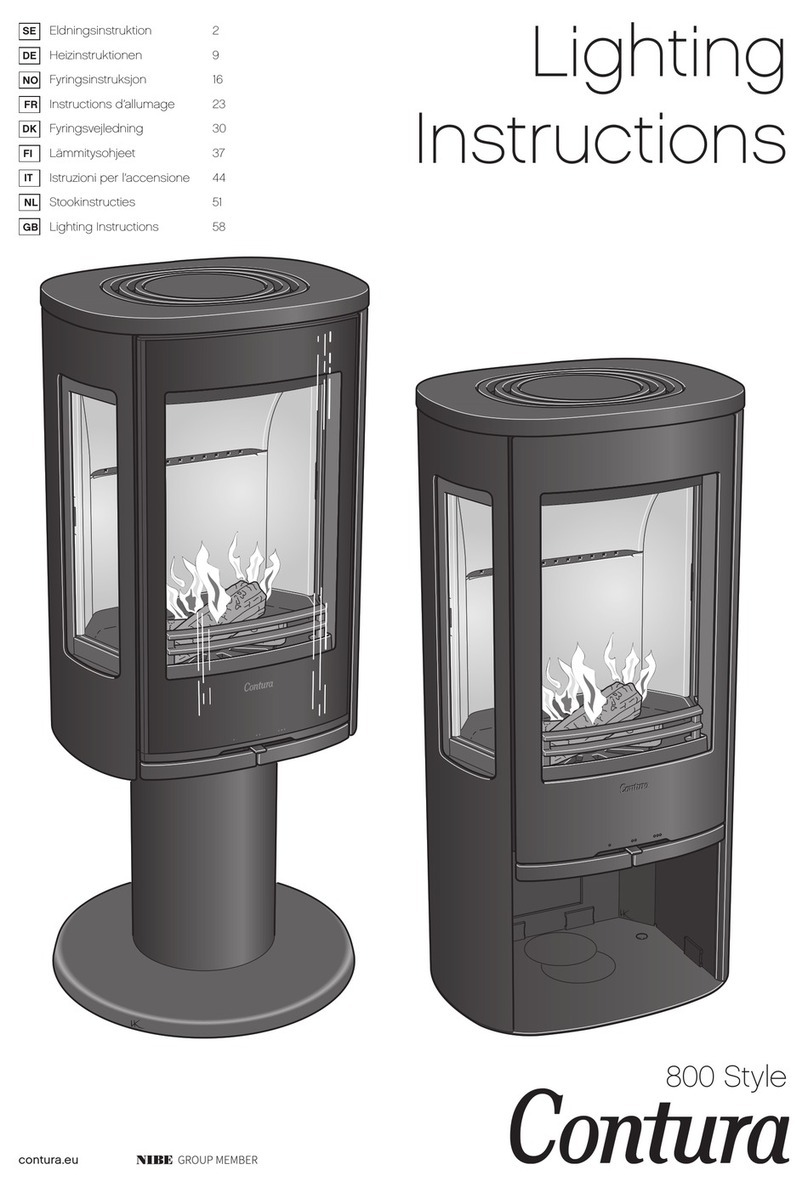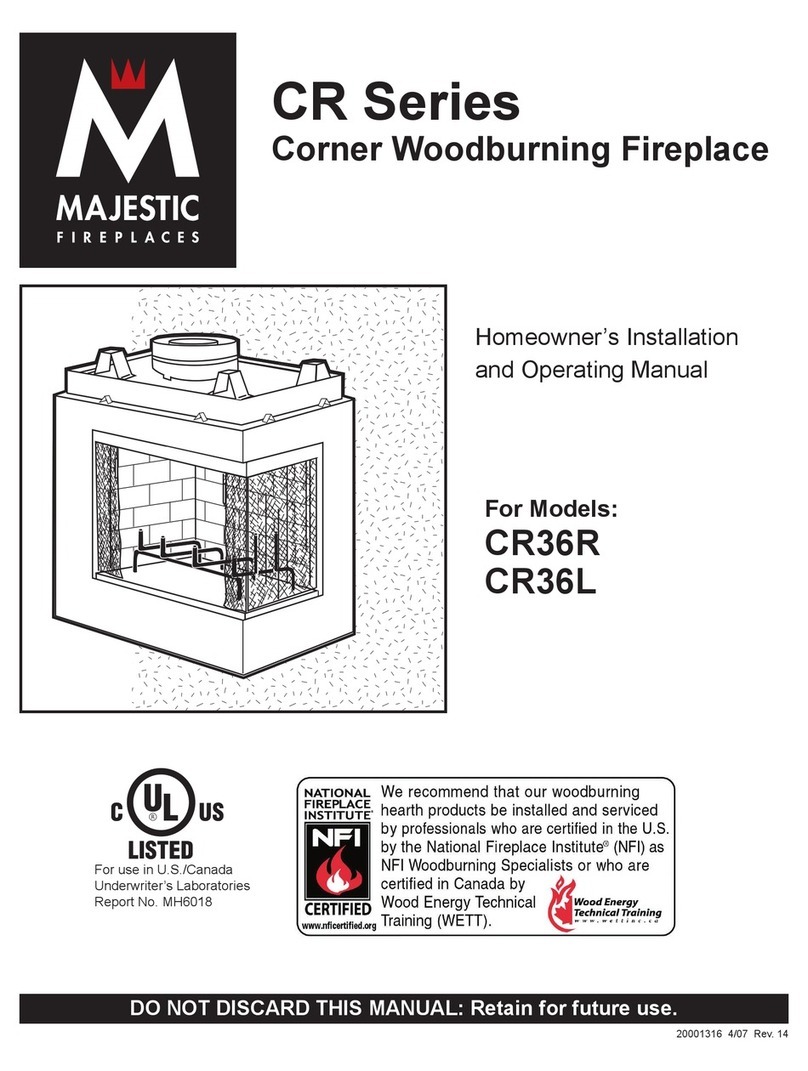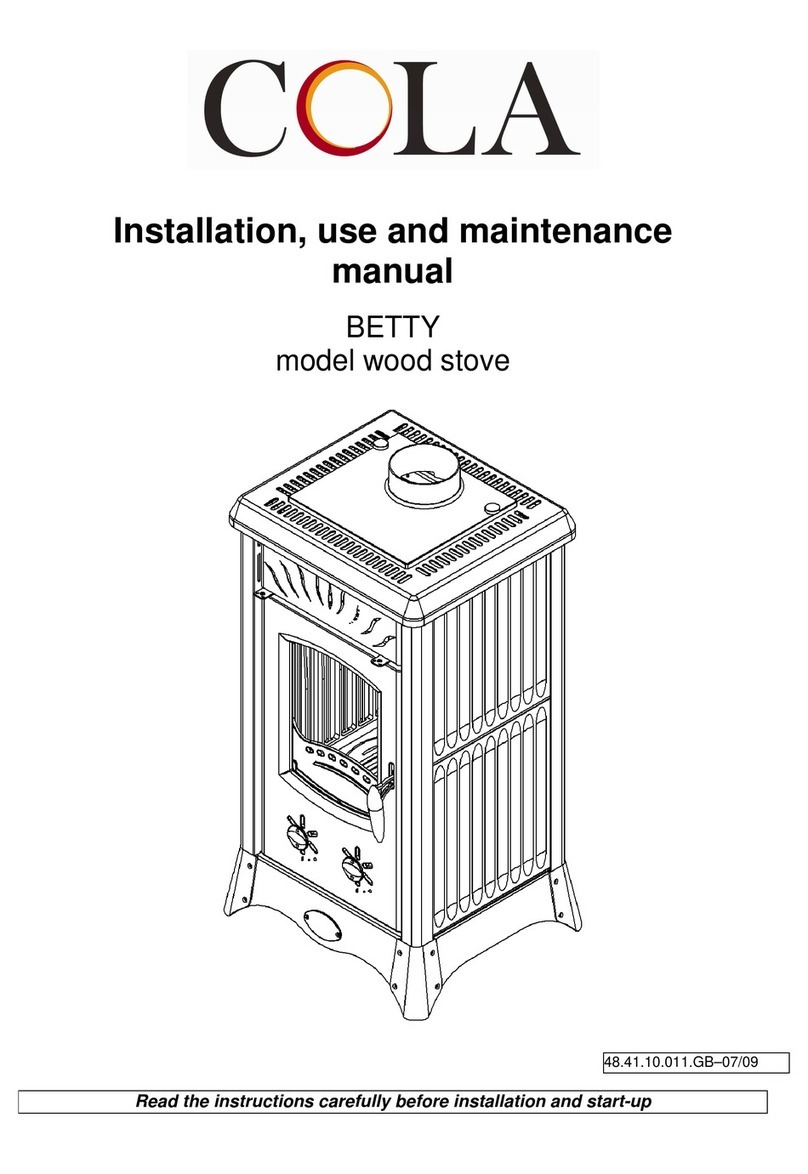
Installation and Operating Instructions for Scanline 7 Stove Series Page 2 of 10
Congratulations on your new stove. We are sure that you will be happy with your investment, especially if you follow the
advice and instructions we have put together in these operating instructions.
The Scanline 7 series has been approved according to the DIN EN 13240, DINplus and 15a B-VG and has been fully tested
and approved for use in smoke control areas throughout the UK (see clean air act Appendix A).
Approval means that consumers can be sure, that the stove meets a range of specifications and requirements intended to
ensure that the materials used are of good quality, that the stove does not adversely affect the environment, and that it is
economical to use.
With your new stove you should have received the following:
a. Operating instructions
b. Guarantee slip
c. A stove glove
d. Ashpan cover
INSTALLATION INSTRUCTIONS
Safety clearances
Stoves must always be installed in line with national and, if applicable, local regulations. It is important to abide by local
regulations regarding setting up chimneys and connection to same. Therefore, always consult your local chimney sweep
before installation, as you are personally responsible for ensuring that the applicable regulations have been met.
Distance regulations
A difference applies to installation next to flammable and non-flammable walls. If the wall is made of non-flammable
material the stove can, in principle, be placed flush against it. However, we recommend leaving a gap of at least 5 cm to
facilitate cleaning behind the stove. The minimum distances to flammable material are stated on the boiler plate and
are listed in the table on page 6.
Warning
A stove gets hot (in excess of 90 degrees), take care to ensure that children, elderly or infirm people cannot come into
contact with it.
Combustible materials should not be stored in the compartment below the ashpan.
IMPORTANT
1. Make sure there is adequate provision to sweep the chimney.
2. Make sure there is adequate ventilation to the room.
3. Please note that any extraction fans operating in the same room as the wood burning stove can reduce the chimney draft
–which may have an adverse effect on stove combustion properties. In addition, this may cause smoke to be emitted from
the stove when the firing door is opened.
4. It must not be possible to cover any air vents.
The floor
It is essential to ensure that the floor surface can actually bear the weight of the stove and a top mounted steel chimney, if
applicable. The stove must stand on a nonflammable surface such as a steel floor plate or a brick or tile floor. The size of the
nonflammable surface used to cover the floor area must match national and local regulations.
The chimney connection The chimney opening must follow national and local regulations. However, the area of the
opening should never be less than 175 cm2, which corresponds to a diameter of 150 mm. If a damper is fitted in the flue gas
pipe, there must always be at least 20 cm2 of free passage, even when the damper is in its “closed” position. If local
regulations permit, two contained fireplaces can be connected to the same chimney. However, you must abide by local
regulations regarding the distance between the two connections. Wood burning stoves must never be connected to
chimneys that are also linked to a gasfired heater. An efficient stove makes high demand on chimney properties –so
always have your local chimney sweep evaluate your chimney.
Connection to a brick chimney
Brick a thimble into the chimney and seat the flue gas pipe in this. The thimble and flue gas pipe must not penetrate the
chimney opening itself, but must be flush with the inside of the chimney duct. Joins between brickwork, the thimble and flue
gas pipe must be sealed with fireproof material and/or beading.
Connection to a steel chimney When fitting a connection from a top output stove directly to a steel chimney, we
recommend fitting the chimney tube inside the flue gas spigot so that any soot and condensation drops into the stove itself
rather than collecting on the exterior surface of the stove. Changing smoke outlet from top mounted to rear mounted (see fig.
11–18 on page 9).
For connections to chimneys that are run through ceilings, all national and local regulations regarding distance to flammable
material must be followed.










